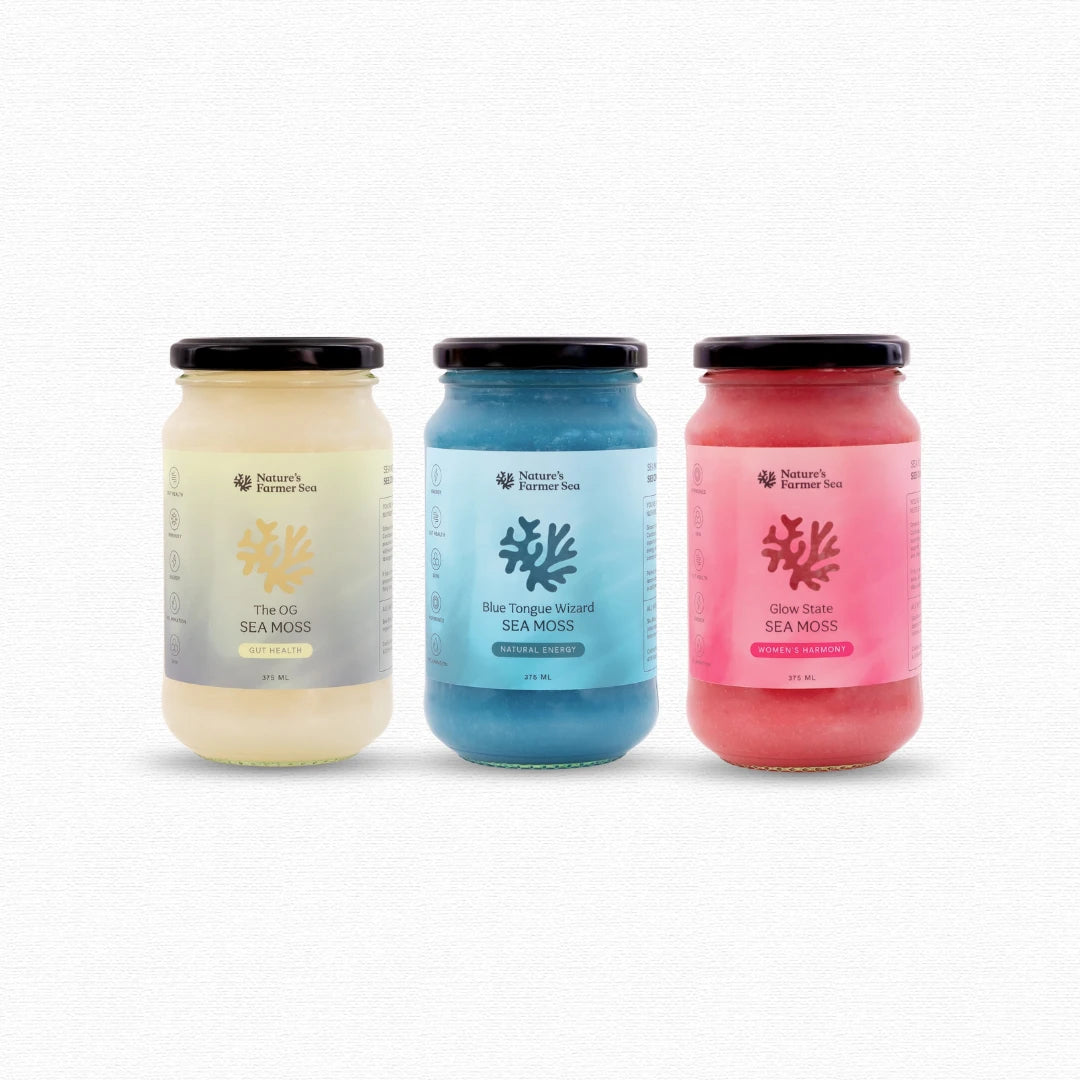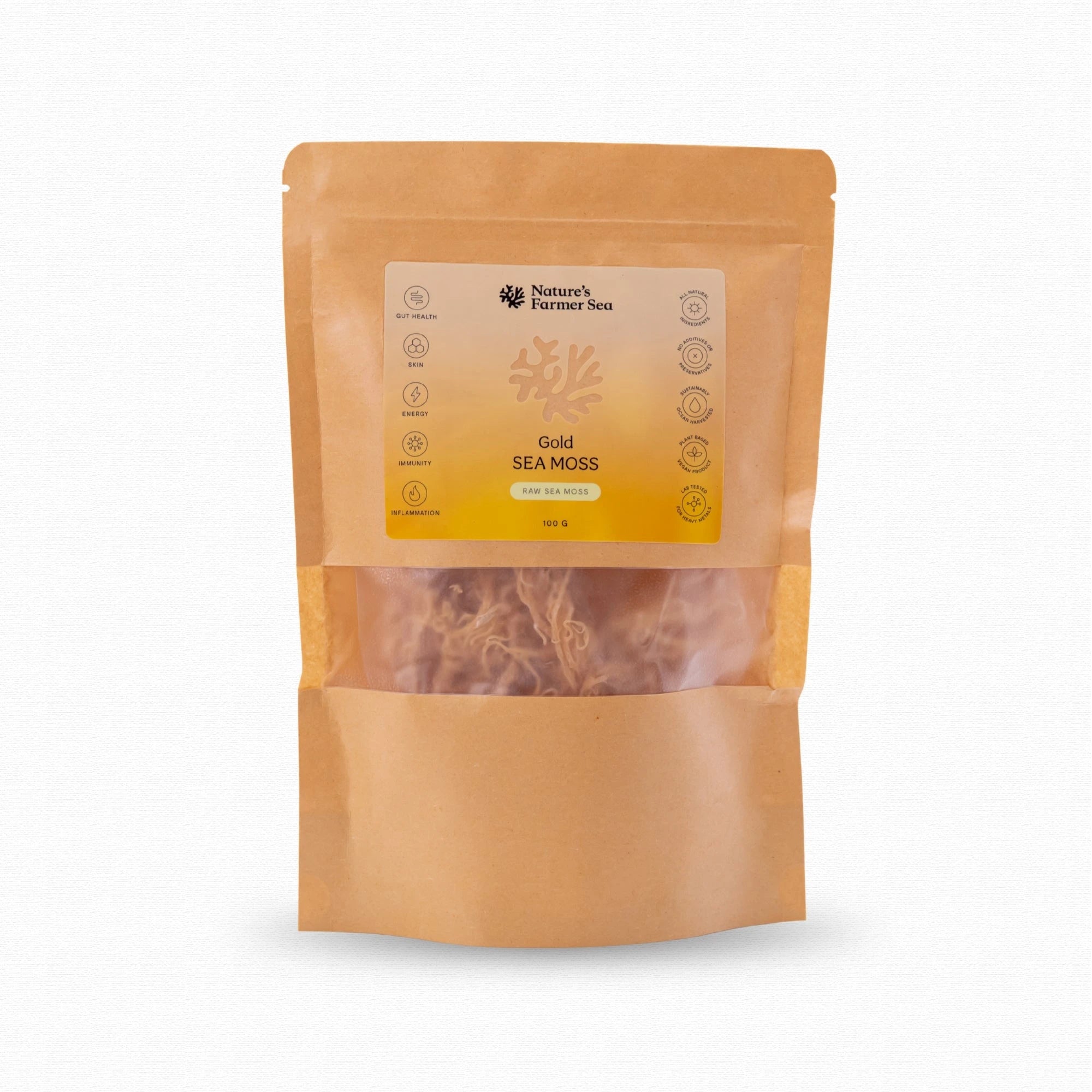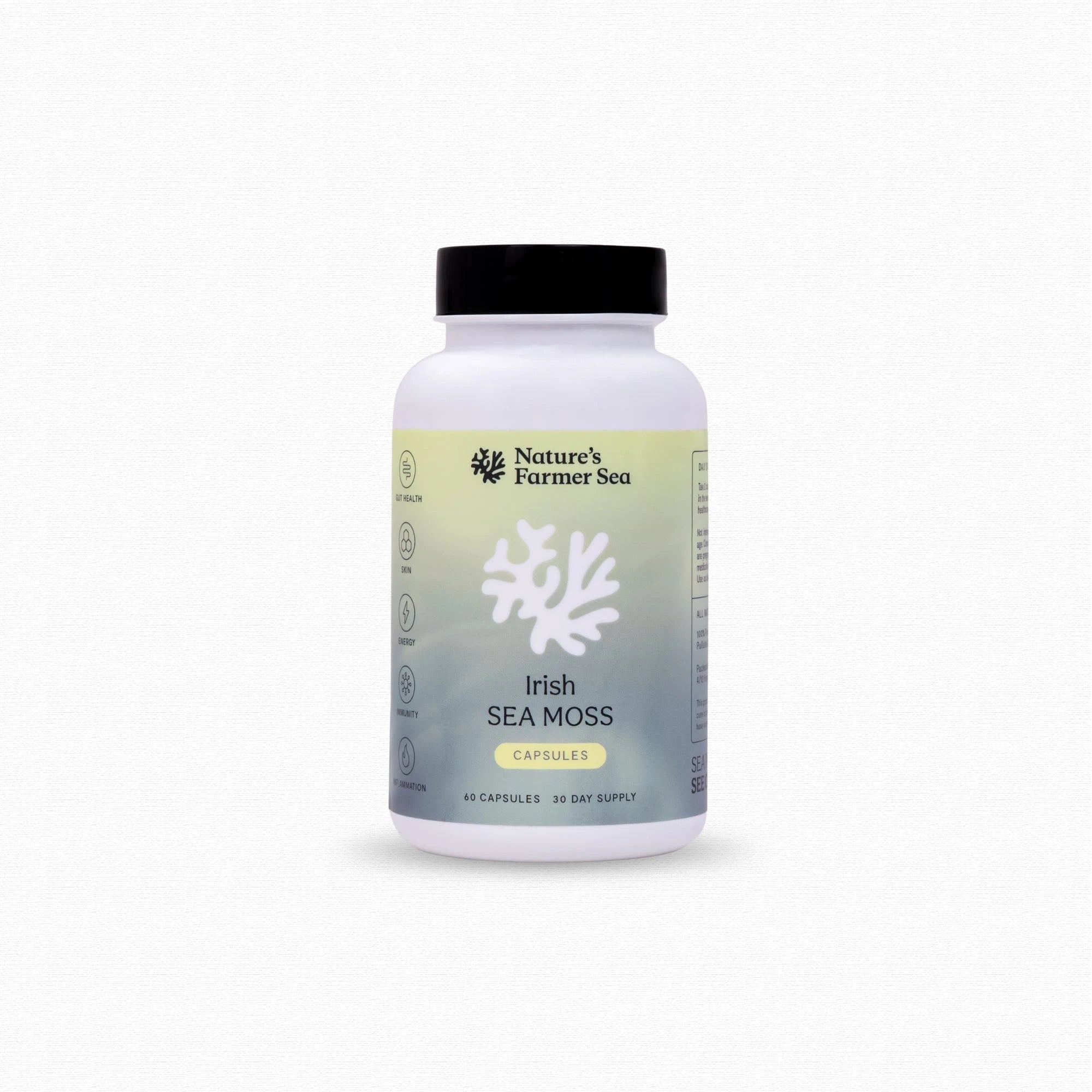During pregnancy, the skin stretches significantly to accommodate our growing babies, which can potentially lead to stretch marks and loss of skin elasticity. Collagen is essential for maintaining the strength of our skin and its elasticity. After giving birth, collagen production helps the skin regain its pre-pregnancy firmness and elasticity, minimising the appearance of stretch marks and promoting skin recovery.
One of the key nutrients for collagen production is vitamin C, a vital precursor for collagen synthesis. Vitamin C can be found in all of Nature's Farmer Sea's Sea Moss Gels, supporting women during pregnancy and postpartum. Additionally, the Blue Tongue Wizard flavour of these gels features blue spirulina, which increases growth factors in dermal fibroblast cells, the cells responsible for creating collagen. Blue spirulina is also a rich source of antioxidants, which mitigate free radicals known to cause skin damage. These combined effects make Nature's Farmer Sea's Sea Moss Gels an excellent choice for supporting skin health during and after pregnancy.
Beyond skin health, collagen plays a crucial role in maintaining the integrity of internal muscles, including the pelvic floor muscles. These muscles undergo considerable strain during pregnancy and childbirth, which can lead to pelvic floor dysfunction, such as urinary incontinence or pelvic organ prolapse, in extreme cases. Adequate collagen production postpartum can aid in restoring pelvic floor muscle tone and function, reducing the risk of long-term complications. Collagen provides the necessary support to rebuild and strengthen these muscles, ensuring better overall recovery.
Vaginal childbirth delivery can cause tears and trauma to the perineum (the area between the vagina and the anus) or even require an episiotomy (a surgical cut to enlarge the vaginal opening). Collagen is a key component of connective tissue, providing structural support to the skin, muscles, and organs. After childbirth, the body requires collagen to repair these tissues, promoting faster wound healing and reducing the risk of complications such as infection or excessive bleeding. Ensuring sufficient collagen intake can significantly enhance the body's ability to heal and recover after the physical demands of childbirth.
Moreover, pregnancy hormones, particularly relaxin, loosen the ligaments and joints to facilitate childbirth. However, this hormonal effect can persist postpartum, increasing the risk of joint instability and musculoskeletal issues. Increasing the consumption of collagen provides structural support to joints, ligaments, and tendons, promoting their stability and preventing injury. Therefore, ensuring sufficient collagen intake postpartum can support joint health and facilitate postnatal recovery. This support is crucial for new mothers, who often experience changes in their posture and increased physical demands as they care for their newborns.
In summary, collagen is a vital protein that plays numerous roles in postpartum recovery. From aiding in skin elasticity and minimising stretch marks to supporting the repair of internal tissues and maintaining joint stability, collagen helps new mothers regain their strength and health after childbirth. By incorporating sources of collagen and its precursors, such as vitamin C and blue spirulina, into their diet, women can promote optimal recovery and well-being during this important life stage. Nature's Farmer Sea's Sea Moss Gels offer a convenient and effective way to boost collagen production and support overall health for women during pregnancy and postpartum.
References:
Brennan, M., Clarke, M., Devane, D., & Dowling, M. (2020). A qualitative study of the factors influencing recruitment to a pilot trial on the prevention of striae gravidarum. BMC pregnancy and childbirth, 20(1), 103. https://doi.org/10.1186/s12884-020-2781-x
Boyer, G., Lachmann, N., Bellemère, G., De Belilovsky, C., & Baudouin, C. (2018). Effects of pregnancy on skin properties: A biomechanical approach. Skin research and technology : official journal of International Society for Bioengineering and the Skin (ISBS) [and] International Society for Digital Imaging of Skin (ISDIS) [and] International Society for Skin Imaging (ISSI), 24(4), 551–556. https://doi.org/10.1111/srt.12465
Gong, R., & Xia, Z. (2019). Collagen changes in pelvic support tissues in women with pelvic organ prolapse. European journal of obstetrics, gynecology, and reproductive biology, 234, 185–189. https://doi.org/10.1016/j.ejogrb.2019.01.012
Guler, Z., & Roovers, J. P. (2022). Role of Fibroblasts and Myofibroblasts on the Pathogenesis and Treatment of Pelvic Organ Prolapse. Biomolecules, 12(1), 94. https:// doi.org/10.3390/biom12010094
Kolimi, P., Narala, S., Nyavanandi, D., Youssef, A. A. A., & Dudhipala, N. (2022). Innovative Treatment Strategies to Accelerate Wound Healing: Trajectory and Recent Advancements. Cells, 11(15), 2439. https://doi.org/10.3390/cells11152439
Aldabe, D., Ribeiro, D. C., Milosavljevic, S., & Dawn Bussey, M. (2012). Pregnancy-related pelvic girdle pain and its relationship with relaxin levels during pregnancy: a systematic review. European spine journal : official publication of the European Spine Society, the European Spinal Deformity Society, and the European Section of the Cervical Spine Research Society, 21(9), 1769–1776. https://doi.org/10.1007/s00586-012-2162-x



